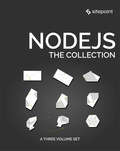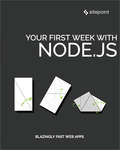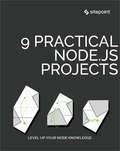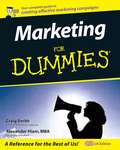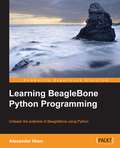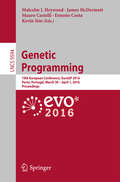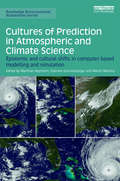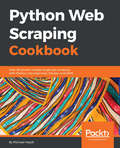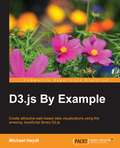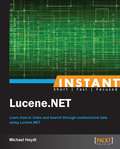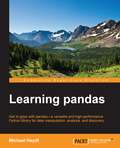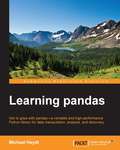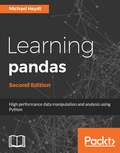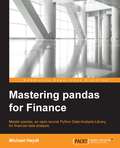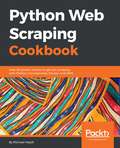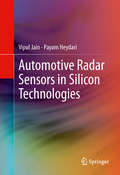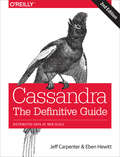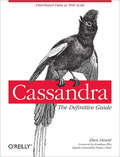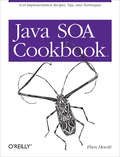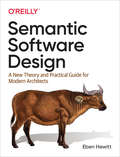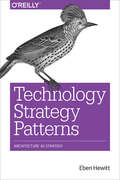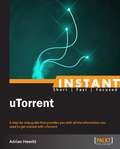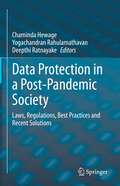- Table View
- List View
Node.js: The Collection
by James Hibbard Camilo Reyes Michael Wanyoike Mark Brown Manjunath M Jay Raj Lukas White James Kolce Simon Holmes Paul Orac Patrick Catanzariti Jani Hartikainen M. David Green Craig Buckler Olayinka Omole Ahmed Bouchefra Paul SauveWhile there have been quite a few attempts to get JavaScript working as a server-side language, Node.js (frequently just called Node) has been the first environment that's gained any traction. It's now used by companies such as Netflix, Uber and Paypal to power their web apps. Node allows for blazingly fast performance; thanks to its event loop model, common tasks like network connection and database I/O can be executed very quickly indeed. From a beginner's point of view, one of Node's obvious advantages is that it uses JavaScript, a ubiquitous language that many developers are comfortable with. If you can write JavaScript for the client-side, writing server-side applications with Node should not be too much of a stretch for you. This collection contains three books that will help get you up and running with Node. It contains: Your First Week With Node.js, which will get started using Node, covering all of the basics. 9 Practical Node.js Projects, which offers a selection of hand-on practical projects to develop your skills.Node.js: Related Tools & Skills, which outlines essential tools and skills that all Node developers should know.
Your First Week With Node.js
by James Hibbard Camilo Reyes Michael Wanyoike Mark Brown Manjunath M Jay Raj Florian RapplWhile there have been quite a few attempts to get JavaScript working as a server-side language, Node.js (frequently just called Node) has been the first environment that's gained any traction. It's now used by companies such as Netflix, Uber and Paypal to power their web apps. Node allows for blazingly fast performance; thanks to its event loop model, common tasks like network connection and database I/O can be executed very quickly indeed. From a beginner's point of view, one of Node's obvious advantages is that it uses JavaScript, a ubiquitous language that many developers are comfortable with. If you can write JavaScript for the client-side, writing server-side applications with Node should not be too much of a stretch for you. In this book, we'll offer a beginner's introduction to Node and its related technologies, and get you under way writing your first Node applications. It contains: What Is Node and When Should I Use It? by James Hibbard A Beginner Splurge in Node.js by Camilo Reyes and Michiel MuldersA Beginner's Guide to npm- the Node Package Manager by Michael Wanyoike and Peter DierxForms, File Uploads and Security with Node.js and Express by Mark BrownMEAN Stack: Build an App with Angular 2+ and the Angular CLI by Manjunath MDebugging JavaScript with the Node Debugger by Camilo ReyesUsing MySQL with Node.js and the mysql JavaScript Client by Jay RajHow to Use SSL/TLS with Node.js by Florian Rappl and Almir Bijedic This book is for anyone who wants to start learning server-side development with Node.js. Familiarity with JavaScript is assumed, but we don't assume any previous back-end development experience.
9 Practical Node.js Projects
by James Hibbard James Kolce Lukas White Jeremy Wilken Simon Holmes Michael Wanyoike Paul Orac Patrick CatanzaritiWhile there have been quite a few attempts to get JavaScript working as a server-side language, Node.js (frequently just called Node) has been the first environment that's gained any traction. It's now used by companies such as Netflix, Uber and Paypal to power their web apps. Node allows for blazingly fast performance; thanks to its event loop model, common tasks like network connection and database I/O can be executed very quickly indeed. In this book, we offer a selection of nine different practical projects that you can follow along with. It contains: Build a Simple Beginner App with Node, Bootstrap & MongoDB by James HibbardHow to Build a File Upload Form with Express and Dropzone.js by Lukas WhiteHow to Build and Structure a Node.js MVC Application by James KolceUser Authentication with the MEAN Stack by Simon Holmes & Jeremy WilkenBuild a JavaScript Command Line Interface (CLI) with Node.js by Lukas White & Michael WanyoikeBuilding a Real-time Chat App with Sails.js by Michael WanyoikePassport Authentication for Node.js Applications by Paul OracLocal Authentication Using Passport in Node.js by Paul OracAn Introduction to NodeBots by Patrick Catanzariti This book is for anyone who wants to start learning server-side development with Node.js. Familiarity with JavaScript is assumed.
Marketing for Dummies
by Alexander Hiam Craig SmithWhether you're looking to expand your business or you're about to start out, this straight-forward guide leads you step by step through every aspect of marketing. Packed with expert tips on identifying customers, using online resources, satisfying your customer's needs and boosting your sales, Marketing For Dummies will help you put together a winning marketing strategy and turn your plans in to profit.Discover how toUnderstand the basics of effective marketingResearch customers, competitors and industryCreate a compelling marketing strategyIncrease consumer awarenessSatisfy clients' needsBoost sales
Learning BeagleBone Python Programming
by Alexander HiamIf you have experience with the Python language and are interested in getting started with electronics, then BeagleBone Black is the perfect platform for you and this book will provide you with the information you need.
Genetic Programming
by Malcolm I. Heywood James Mcdermott Mauro Castelli Ernesto Costa Kevin SimThis book constitutes the refereed proceedings of the19th European Conference on Genetic Programming, EuroGP 2016, held in Porto,Portugal, in March/April 2016 co-located with the Evo*2016 events: EvoCOP,EvoMUSART, and EvoApplications. The 11 revised full papers presented togetherwith 8 poster papers were carefully reviewed and selected from 36 submissions. The wide range of topics in this volume reflects the current state of researchin the field. Thus, we see topics as diverse as semantic methods, recursiveprograms, grammatical methods, coevolution, Cartesian GP, feature selection,metaheuristics, evolvability, and fitness predictors; and applicationsincluding image processing, one-class classification, SQL injection attacks,numerical modelling, streaming data classification, creation and optimisationof circuits, multi-class classification, scheduling in manufacturing andwireless networks.
Cultures of Prediction in Atmospheric and Climate Science: Epistemic and Cultural Shifts in Computer-based Modelling and Simulation (Routledge Environmental Humanities)
by Matthias Heymann Gabriele Gramelsberger Martin MahonyIn recent decades, science has experienced a revolutionary shift. The development and extensive application of computer modelling and simulation has transformed the knowledge‐making practices of scientific fields as diverse as astro‐physics, genetics, robotics and demography. This epistemic transformation has brought with it a simultaneous heightening of political relevance and a renewal of international policy agendas, raising crucial questions about the nature and application of simulation knowledges throughout public policy. Through a diverse range of case studies, spanning over a century of theoretical and practical developments in the atmospheric and environmental sciences, this book argues that computer modelling and simulation have substantially changed scientific and cultural practices and shaped the emergence of novel ‘cultures of prediction’. Making an innovative, interdisciplinary contribution to understanding the impact of computer modelling on research practice, institutional configurations and broader cultures, this volume will be essential reading for anyone interested in the past, present and future of climate change and the environmental sciences.
Python Web Scraping Cookbook: Over 90 proven recipes to get you scraping with Python, microservices, Docker, and AWS
by Michael Heydt Jay ZengUntangle your web scraping complexities and access web data with ease using Python scripts Key Features Hands-on recipes for advancing your web scraping skills to expert level. One-Stop Solution Guide to address complex and challenging web scraping tasks using Python. Understand the web page structure and collect meaningful data from the website with ease Book Description Python Web Scraping Cookbook is a solution-focused book that will teach you techniques to develop high-performance scrapers and deal with crawlers, sitemaps, forms automation, Ajax-based sites, caches, and more.You'll explore a number of real-world scenarios where every part of the development/product life cycle will be fully covered. You will not only develop the skills to design and develop reliable, performance data flows, but also deploy your codebase to an AWS. If you are involved in software engineering, product development, or data mining (or are interested in building data-driven products), you will find this book useful as each recipe has a clear purpose and objective. Right from extracting data from the websites to writing a sophisticated web crawler, the book's independent recipes will be a godsend on the job. This book covers Python libraries, requests, and BeautifulSoup. You will learn about crawling, web spidering, working with AJAX websites, paginated items, and more. You will also learn to tackle problems such as 403 errors, working with proxy, scraping images, LXML, and more. By the end of this book, you will be able to scrape websites more efficiently and to be able to deploy and operate your scraper in the cloud. What you will learn Use a wide variety of tools to scrape any website and data—including BeautifulSoup, Scrapy, Selenium, and many more Master expression languages such as XPath, CSS, and regular expressions to extract web data Deal with scraping traps such as hidden form fields, throttling, pagination, and different status codes Build robust scraping pipelines with SQS and RabbitMQ Scrape assets such as images media and know what to do when Scraper fails to run Explore ETL techniques of build a customized crawler, parser, and convert structured and unstructured data from websites Deploy and run your scraper-as-aservice in AWS Elastic Container Service Who this book is for This book is ideal for Python programmers, web administrators, security professionals or someone who wants to perform web analytics would find this book relevant and useful. Familiarity with Python and basic understanding of web scraping would be useful to take full advantage of this book.
D3.js By Example
by Michael HeydtCreate attractive web-based data visualizations using the amazing JavaScript library D3.js About This Book * Learn to use the facilities provided by D3.js to create data-driven visualizations * Explore the concepts of D3.js through examples that enable you to quickly create visualizations including charts, network diagrams, and maps * Get practical examples of visualizations using real-world data sets that show you how to use D3.js to visualize and interact with information to glean its underlying meaning Who This Book Is For Whether you are new to data and data visualization, a seasoned data scientist, or a computer graphics specialist, this book will provide you with the skills you need to create web-based and interactive data visualizations. This book assumes some knowledge of coding and in particular, experience coding in JavaScript. What You Will Learn * Install and use D3.js to create HTML elements within the document * Use development tools such as JSBIN and Chrome Developer Tools to create D3.js applications * Retrieve JSON data and use D3.js selections and data binding to create visual elements from data * Create and style graphical elements such as circles, ellipses, rectangles, lines, paths, and text using SVG * Turn your data into bar and scatter charts, and add margins, axes, labels, and legends * Use D3.js generators to perform the magic of creating complex visualizations from data * Add interactivity to your visualizations, including tool-tips, sorting, hover-to-highlight, and grouping and dragging of visuals In Detail This book will take you through all the concepts of D3.js starting with the most basic ones and progressively building on them in each chapter to expand your knowledge of D3.js. Starting with obtaining D3.js and creating simple data bindings to non-graphical HTML elements, you will then master the creation of graphical elements from data. You'll discover how to combine those elements into simple visualizations such as bar, line, and scatter charts, as well as more elaborate visualizations such as network diagrams, Sankey diagrams, maps, and choreopleths. Using practical examples provided, you will quickly get to grips with the features of D3.js and use this learning to create your own spectacular data visualizations with D3.js. Style and approach This book uses a practical, step-by-step approach that builds iteratively, starting with the basic concepts right through to mastery of the technology. Each concept is demonstrated using code examples that are interactively available online (and can also be run locally), and each chapter builds upon the concepts covered in the previous chapter,with succinct explanations of what the code does and how it fits into the bigger picture.
Instant Lucene.NET
by Michael HeydtFilled with practical, step-by-step instructions and clear explanations for the most important and useful tasks. A step-by-step guide that helps you to index, search, and retrieve unstructured data with the help of Lucene.NET.Instant Lucene.NET How-to is essential for developers new to Lucene and Lucene.NET who are looking to get an immediate foundational understanding of how to use the library in their application. It's assumed you have programming experience in C# already, but not that you have experience with search techniques such as information retrieval theory (although there will be a little of that explained). The recipes in the book generate or come with sample documents, but feel free to use your own!
Learning pandas
by Michael HeydtIf you are a Python programmer who wants to get started with performing data analysis using pandas and Python, this is the book for you. Some experience with statistical analysis would be helpful but is not mandatory.
Learning pandas
by Michael Heydt<P><P>Key Features <P><P>Employ the use of pandas for data analysis closely to focus more on analysis and less on programming <P><P>Get programmers comfortable in performing data exploration and analysis on Python using pandas <P><P>Step-by-step demonstration of using Python and pandas with interactive and incremental examples to facilitate learning <P><P>Book Description <P><P>This learner's guide will help you understand how to use the features of pandas for interactive data manipulation and analysis. <P><P>This book is your ideal guide to learning about pandas, all the way from installing it to creating one- and two-dimensional indexed data structures, indexing and slicing-and-dicing that data to derive results, loading data from local and Internet-based resources, and finally creating effective visualizations to form quick insights. You start with an overview of pandas and NumPy and then dive into the details of pandas, covering pandas' Series and DataFrame objects, before ending with a quick review of using pandas for several problems in finance. <P><P>With the knowledge you gain from this book, you will be able to quickly begin your journey into the exciting world of data science and analysis. <P><P>What You Will Learn <P><P>Install pandas on Windows, Mac, and Linux using the Anaconda Python distribution <P><P>Learn how pandas builds on NumPy to implement flexible indexed data <P><P>Adopt pandas' Series and DataFrame objects to represent one- and two-dimensional data constructs <P><P>Index, slice, and transform data to derive meaning from information <P><P>Load data from files, databases, and web services <P><P>Manipulate dates, times, and time series data <P><P>Group, aggregate, and summarize data <P><P>Visualize techniques for pandas and statistical data
Learning pandas - Second Edition
by Michael HeydtGet to grips with pandas—a versatile and high-performance Python library for data manipulation, analysis, and discovery About This Book • Get comfortable using pandas and Python as an effective data exploration and analysis tool • Explore pandas through a framework of data analysis, with an explanation of how pandas is well suited for the various stages in a data analysis process • A comprehensive guide to pandas with many of clear and practical examples to help you get up and using pandas Who This Book Is For This book is ideal for data scientists, data analysts, Python programmers who want to plunge into data analysis using pandas, and anyone with a curiosity about analyzing data. Some knowledge of statistics and programming will be helpful to get the most out of this book but not strictly required. Prior exposure to pandas is also not required. What You Will Learn • Understand how data analysts and scientists think about of the processes of gathering and understanding data • Learn how pandas can be used to support the end-to-end process of data analysis • Use pandas Series and DataFrame objects to represent single and multivariate data • Slicing and dicing data with pandas, as well as combining, grouping, and aggregating data from multiple sources • How to access data from external sources such as files, databases, and web services • Represent and manipulate time-series data and the many of the intricacies involved with this type of data • How to visualize statistical information • How to use pandas to solve several common data representation and analysis problems within finance In Detail You will learn how to use pandas to perform data analysis in Python. You will start with an overview of data analysis and iteratively progress from modeling data, to accessing data from remote sources, performing numeric and statistical analysis, through indexing and performing aggregate analysis, and finally to visualizing statistical data and applying pandas to finance. With the knowledge you gain from this book, you will quickly learn pandas and how it can empower you in the exciting world of data manipulation, analysis and science. Style and approach • Step-by-step instruction on using pandas within an end-to-end framework of performing data analysis • Practical demonstration of using Python and pandas using interactive and incremental examples
Mastering pandas for Finance
by Michael HeydtIf you are interested in quantitative finance, financial modeling, and trading, or simply want to learn how Python and pandas can be applied to finance, then this book is ideal for you. Some knowledge of Python and pandas is assumed. Interest in financial concepts is helpful, but no prior knowledge is expected.
Python Web Scraping Cookbook: Over 90 Proven Recipes To Get You Scraping With Python, Micro Services, Docker And Aws
by Michael HeydtPython Web Scraping Cookbook is a solution-focused book that will teach you techniques to develop high-performance Scrapers, and deal with cookies, hidden form fields, Ajax-based sites, proxies, and more. By the end of this book, you will be able to scrape websites more efficiently with more accurate data, and how to package, deploy and operate scrapers in the cloud.
Automotive Radar Sensors in Silicon Technologies: Circuits And Systems
by Payam Heydari Vipul JainOne of the leading causes of automobile accidents is the slow reaction of the driver while responding to a hazardous situation. State-of-the-art wireless electronics can automate several driving functions, leading to significant reduction in human error and improvement in vehicle safety. With continuous transistor scaling, silicon fabrication technology now has the potential to substantially reduce the cost of automotive radar sensors. This book bridges an existing gap between information available on dependable system/architecture design and circuit design. It provides the background of the field and detailed description of recent research and development of silicon-based radar sensors. System-level requirements and circuit topologies for radar transceivers are described in detail. Holistic approaches towards designing radar sensors are validated with several examples of highly-integrated radar ICs in silicon technologies. Circuit techniques to design millimeter-wave circuits in silicon technologies are discussed in depth.
The Computing Universe
by Tony Hey Gyuri PápayComputers now impact almost every aspect of our lives, from our social interactions to the safety and performance of our cars. How did this happen in such a short time? And this is just the beginning. . . . In this book, Tony Hey and Gyuri Pápay lead us on a journey from the early days of computers in the 1930s to the cutting-edge research of the present day that will shape computing in the coming decades. Along the way, they explain the ideas behind hardware, software, algorithms, Moore's Law, the birth of the personal computer, the Internet and the Web, the Turing Test, Jeopardy's Watson, World of Warcraft, spyware, Google, Facebook, and quantum computing. This book also introduces the fascinating cast of dreamers and inventors who brought these great technological developments into every corner of the modern world. This exciting and accessible introduction will open up the universe of computing to anyone who has ever wondered where his or her smartphone came from.
Cassandra: The Definitive Guide
by Eben Hewitt Jeff CarpenterImagine what you could do if scalability wasn't a problem. With this hands-on guide, you'll learn how the Cassandra database management system handles hundreds of terabytes of data while remaining highly available across multiple data centers. This expanded second edition--updated for Cassandra 3.0--provides the technical details and practical examples you need to put this database to work in a production environment.Authors Jeff Carpenter and Eben Hewitt demonstrate the advantages of Cassandra's non-relational design, with special attention to data modeling. If you're a developer, DBA, or application architect looking to solve a database scaling issue or future-proof your application, this guide helps you harness Cassandra's speed and flexibility.Understand Cassandra's distributed and decentralized structureUse the Cassandra Query Language (CQL) and cqlsh--the CQL shellCreate a working data model and compare it with an equivalent relational modelDevelop sample applications using client drivers for languages including Java, Python, and Node.jsExplore cluster topology and learn how nodes exchange dataMaintain a high level of performance in your clusterDeploy Cassandra on site, in the Cloud, or with DockerIntegrate Cassandra with Spark, Hadoop, Elasticsearch, Solr, and Lucene
Cassandra: Distributed Data at Web Scale
by Eben Hewitt Jeff CarpenterImagine what you could do if scalability wasn't a problem. With this hands-on guide, you’ll learn how the Cassandra database management system handles hundreds of terabytes of data while remaining highly available across multiple data centers. This expanded second edition—updated for Cassandra 3.0—provides the technical details and practical examples you need to put this database to work in a production environment.Authors Jeff Carpenter and Eben Hewitt demonstrate the advantages of Cassandra’s non-relational design, with special attention to data modeling. If you’re a developer, DBA, or application architect looking to solve a database scaling issue or future-proof your application, this guide helps you harness Cassandra’s speed and flexibility.Understand Cassandra’s distributed and decentralized structureUse the Cassandra Query Language (CQL) and cqlsh—the CQL shellCreate a working data model and compare it with an equivalent relational modelDevelop sample applications using client drivers for languages including Java, Python, and Node.jsExplore cluster topology and learn how nodes exchange dataMaintain a high level of performance in your clusterDeploy Cassandra on site, in the Cloud, or with DockerIntegrate Cassandra with Spark, Hadoop, Elasticsearch, Solr, and Lucene
Cassandra: The Definitive Guide
by Eben HewittWhat could you do with data if scalability wasn't a problem? With this hands-on guide, you'll learn how Apache Cassandra handles hundreds of terabytes of data while remaining highly available across multiple data centers -- capabilities that have attracted Facebook, Twitter, and other data-intensive companies. Cassandra: The Definitive Guide provides the technical details and practical examples you need to assess this database management system and put it to work in a production environment. Author Eben Hewitt demonstrates the advantages of Cassandra's nonrelational design, and pays special attention to data modeling. If you're a developer, DBA, application architect, or manager looking to solve a database scaling issue or future-proof your application, this guide shows you how to harness Cassandra's speed and flexibility. Understand the tenets of Cassandra's column-oriented structure Learn how to write, update, and read Cassandra data Discover how to add or remove nodes from the cluster as your application requires Examine a working application that translates from a relational model to Cassandra's data model Use examples for writing clients in Java, Python, and C# Use the JMX interface to monitor a cluster's usage, memory patterns, and more Tune memory settings, data storage, and caching for better performance
Java SOA Cookbook: SOA Implementation Recipes, Tips, and Techniques
by Eben HewittJava SOA Cookbook offers practical solutions and advice to programmers charged with implementing a service-oriented architecture (SOA) in their organization. Instead of providing another conceptual, high-level view of SOA, this cookbook shows you how to make SOA work. It's full of Java and XML code you can insert directly into your applications and recipes you can apply right away. The book focuses primarily on the use of free and open source Java Web Services technologies -- including Java SE 6 and Java EE 5 tools -- but you'll find tips for using commercially available tools as well. Java SOA Cookbook will help you: Construct XML vocabularies and data models appropriate to SOA applications Build real-world web services using the latest Java standards, including JAX-WS 2.1 and JAX-RS 1.0 for RESTful web services Integrate applications from popular service providers using SOAP, POX, and Atom Create service orchestrations with complete coverage of the WS-BPEL (Business Process Execution Language) 2.0 standard Improve the reliability of SOAP-based services with specifications such as WS-Reliable Messaging Deal with governance, interoperability, and quality-of-service issues The recipes in Java SOA Cookbook will equip you with the knowledge you need to approach SOA as an integration challenge, not an obstacle.
Semantic Software Design: A New Theory and Practical Guide for Modern Architects
by Eben HewittWith this practical book, architects, CTOs, and CIOs will learn a set of patterns for the practice of architecture, including analysis, documentation, and communication. Author Eben Hewitt shows you how to create holistic and thoughtful technology plans, communicate them clearly, lead people toward the vision, and become a great architect or Chief Architect.This book covers each key aspect of architecture comprehensively, including how to incorporate business architecture, information architecture, data architecture, application (software) architecture together to have the best chance for the system’s success.Get a practical set of proven architecture practices focused on shipping great products using architectureLearn how architecture works effectively with development teams, management, and product management teams through the value chainFind updated special coverage on machine learning architectureGet usable templates to start incorporating into your teams immediatelyIncorporate business architecture, information architecture, data architecture, and application (software) architecture together
Technology Strategy Patterns: Architecture as Strategy
by Eben HewittTechnologists who want their ideas heard, understood, and funded are often told to speak the language of business—without really knowing what that is. This book’s toolkit provides architects, product managers, technology managers, and executives with a shared language—in the form of repeatable, practical patterns and templates—to produce great technology strategies.Author Eben Hewitt developed 39 patterns over the course of a decade in his work as CTO, CIO, and chief architect for several global tech companies. With these proven tools, you can define, create, elaborate, refine, and communicate your architecture goals, plans, and approach in a way that executives can readily understand, approve, and execute.This book covers:Architecture and strategy: Adopt a strategic architectural mindset to make a meaningful material impactCreating your strategy: Define the components of your technology strategy using proven patternsCommunicating the strategy: Convey your technology strategy in a compelling way to a variety of audiencesBringing it all together: Employ patterns individually or in clusters for specific problems; use the complete framework for a comprehensive strategy
Instant uTorrent
by Adrian HewittGet to grips with a new technology, understand what it is and what it can do for you, and then get to work with the most important features and tasks.This book takes a practical, hands-on approach to installing and using uTorrent.This book is great for tech-savvy users who are familiar with network basics and who are looking for an easy-to-follow guide to the BitTorrent technology using uTorrent as the program of choice.
Data Protection in a Post-Pandemic Society: Laws, Regulations, Best Practices and Recent Solutions
by Chaminda Hewage Yogachandran Rahulamathavan Deepthi RatnayakeThis book offers the latest research results and predictions in data protection with a special focus on post-pandemic society. This book also includes various case studies and applications on data protection. It includes the Internet of Things (IoT), smart cities, federated learning, Metaverse, cryptography and cybersecurity. Data protection has burst onto the computer security scene due to the increased interest in securing personal data. Data protection is a key aspect of information security where personal and business data need to be protected from unauthorized access and modification. The stolen personal information has been used for many purposes such as ransom, bullying and identity theft. Due to the wider usage of the Internet and social media applications, people make themselves vulnerable by sharing personal data. This book discusses the challenges associated with personal data protection prior, during and post COVID-19 pandemic. Some of these challenges are caused by the technological advancements (e.g. Artificial Intelligence (AI)/Machine Learning (ML) and ChatGPT). In order to preserve the privacy of the data involved, there are novel techniques such as zero knowledge proof, fully homomorphic encryption, multi-party computations are being deployed. The tension between data privacy and data utility drive innovation in this area where numerous start-ups around the world have started receiving funding from government agencies and venture capitalists. This fuels the adoption of privacy-preserving data computation techniques in real application and the field is rapidly evolving. Researchers and students studying/working in data protection and related security fields will find this book useful as a reference.
